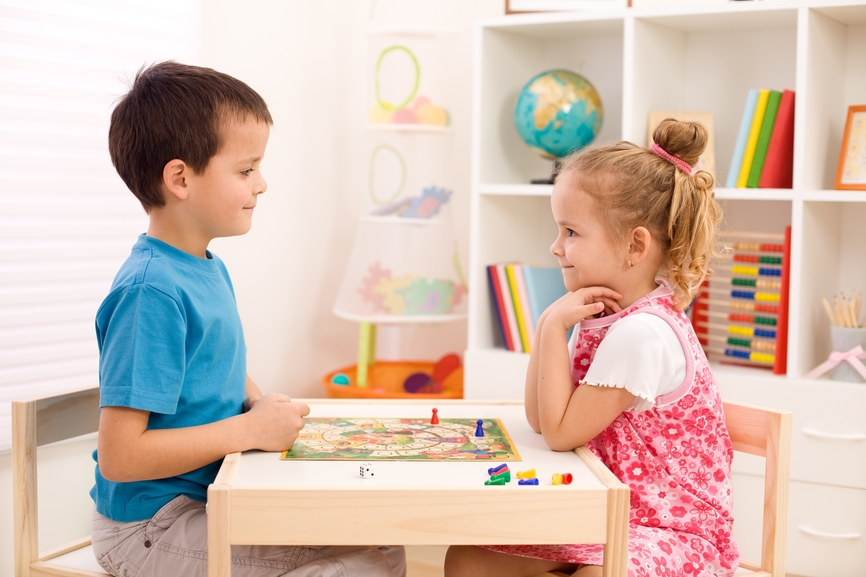6 Tips for Creating a Safe & Fun At-Home Play Space

As a parent, it’s up to you to construct a safe and fun play space for your child. Your younger children see your house as a place to explore. While it’s essential for them to investigate their environment, it’s also important to establish a dedicated play space. This way, your kids can live out their imaginations without any harm!
Here are a few tips on how to create an at-home play space that’s safe and fun:
-
1. Choose an Ideal Area
Whether your kids are toddlers or preschoolers, it’s crucial to choose the best area. You don’t need to have a massive basement or den to build an ideal play space. With a little creativity, any space works. Look for places away from dangerous structures, like stairs, bookcases and doors. A playroom on the first floor can help you keep an eye on your kids as you complete other tasks.
You should also consider any electrical outlets, as well as wires and cords. You can cover those up after you choose a space, but it’s ideal to avoid them altogether.
-
2. Designate Room for Art
Your children can and should try arts and crafts. Art can help your kids learn many valuable abilities, from language skills to cognitive development. That said, it’s essential to separate your intended “messy” areas from your kids’ play space. This way, you won’t have to deal with any excessive clean up when your child tries to paint to your couch!
You can set up a table with different art supplies for your kids to enjoy — with supervision. If you don’t have a table, why not hang up paper sheets on your walls? Your children can color the walls without any harm done. Keep all art supplies shut away when you’re not present. Otherwise, it won’t take long for an accident to happen.
-
3. Look for Potential Hazards
After you select an accessible place for your children to play, it’s time to check for possible hazards. Even if you’ve chosen a mostly bare area, it’s best to look anyways. Young children always find a way to explore potentially dangerous situations. Plus, hard floors can lead to serious injuries, so it’s crucial to make sure there’s a soft rug for your kids to play on.
Here’s an easy way to check. Get down on your hands and knees so you can peek under couches and chairs. Remove any small objects you find. Take a look at what else may be present. Are there windows with blinds? Keep any cords tied up against the wall so your children can’t reach them. Is there a houseplant nearby? Move it to another location, as some varieties can be deadly when ingested.
Your play space should focus on toys, not other household objects.
-
4. Use Protective Baby Gates
Try to fit your play space into a single room. Many parents like to use baby gates or playpens so their kids stick to one area. This way, they won’t walk away to explore a more dangerous place like the kitchen. You could convert an entire room into a play area, as children sometimes like to have privacy when they play. That said, you should make sure you can see them at all times.
Protective gates can be an effective way to keep your kids inside a central location. You can use them to create a playpen for your smaller children. They won’t be as productive for older kids, but they’re still nice to have on hand to create a border.
-
5. Try a Book Nook
There’s never a bad time for your children to learn how to read. It’s always a smart idea to have books around, whether they can read or not. This effort could help your kids spark an early interest in reading. They may also be more inclined to pick up a book if they associate playing with reading. In any case, it’s best to have a few options available for when they feel like they want to read.
You can create a cozy environment with a few pillows and blankets. If they’d rather curl up with a book than play with their toys, they should be able to do so. Try to avoid large furniture items like bean bags so they don’t hurt themselves. A book nook within your play space can be a productive way to encourage a new skill. Plus, it’s beneficial when you don’t have much room for a dedicated reading area.
-
6. Add Their Favorite Toys
You can’t have a play space without toys. It’s essential to incorporate your kids’ favorite toys, as well as other ways to stimulate their imaginations. Of course, you don’t have to buy new toys when making your play space. All you need are your kids’ current toys and other fun objects you want to incorporate. These items could include blocks and books, too.
Make sure your current toys are accessible within the play space. Your kids shouldn’t have to reach for anything. You can also check to see if any toys have labels on them that indicate a specific age range. A toy meant for your 5-year-old won’t be so fun for your 3-year-old.
-
Try These Suggestions for an Enjoyable Playroom at Home
With a little creativity, you can create a safe and fun play space for your kids. As long as the area stays clean and tidy, your children should have a blast. Try these ideas for an area your kids will love.
The post 6 Tips for Creating a Safe & Fun At-Home Play Space appeared first on Nature Moms.
